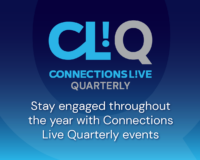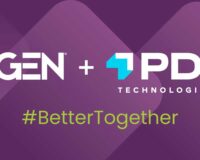
In a world of limited resources and unpredictable consumers, optimizing your marketing strategy and spending can make a major difference in your end result. But how do you know if you’re marketing investment is optimized? Are you measuring your Return on Marketing Investment (ROMI)? When it comes to measuring ROMI, there is no standard approach that is utilized across the board. Every brand thinks of ROMI differently and how they go about it.
In this article, we highlight the importance of ROMI for brands and why it matters in understanding if you’re meeting the goals and objectives through the campaigns you’re running.
What Is ROMI, and Why Should You Care?
ROI and ROMI are often used interchangeably, but the most significant difference is that ROMI is more specific on your return on marketing investment—what you’re measuring and how you’re adjusting your measurements depending on what your goals are for the campaign you’re running. Are you trying to increase customer penetration? Generate trial? Increase how much is spent during the trip (buy rate or basket size)? Increase trips? Are you trying to build awareness of your new product or service by getting eyes on your digital ads or in-store signage? Whatever it may be, it’s important to understand ROMI.
Marketers today are looking for a consistent measuring outcome that is the same across all their marketing investments in order to better allocate, optimize and implement their future efforts. Even though the programs and goals for each campaign are different, like measuring ROMI in c-stores versus digital ads, they are looking for a consistent measuring outcome to make comparisons. Looking at ROMI allows marketers to understand better if they’re achieving their campaign goals and where their time is best spent (or not spent).
What Should You Be Evaluating?
Again, what marketers want to know about ROMI depends on their objectives. What is the return specific to your objective? That is where these four buckets marketers are evaluating come into play: reach, engagement, lift, and financial return.
Reach How many consumers are seeing/hearing/or being reached by your efforts? How big is your reach, and how is it measured? If your goal is to generate awareness of a new product, then the goal and how you should be measuring ROMI is by how many eyes saw that offer or ad. That can include who saw the offer in the mobile app, the projected number of consumers who saw the signage within the store, an email communication including the promotion, etc. What promotion you’re pushing and how you’re pushing it influences ROMI.
Engagement How many consumers actually took advantage of or interacted with your efforts? Engagement is usually measured by the number of coupons used, offers accepted, link clicked, or another measurable action. If the goal of your campaign is to generate X number of purchases, or you have a ROMI goal of 10 offer uses for every $1 spent, then engagement is the measurement you should focus on.
Lift Did you generate the increase in business you were looking for? You wanted to run a promotion that would help increase the number of consumer trips and keep them coming back. Measuring lift requires a starting point to measure against. So, if you wanted to increase sales by 10%, you’d need to know the before and after of those sales and your ROMI would be based on if your investment gave you that lift. Make sure you understand the starting point in order to properly measure the ROMI when having a goal of lift.
Financial Return When making investment decisions, financial considerations often are at play. Financial return should be looked at in context of outcome. How can I execute a campaign or a promotion in order to maximize or protect margin, or which is the best tool or stimuli to achieve the goal that also has reasonable financial return?
What Data Is Important to Look At?
Even if you can’t use the same data to measure ROMI across all of your marketing efforts, the end result is what brings it all together at the end of the day. You should be measuring what you’re doing using the data available, and then comparing what campaigns, mediums, or events delivered on their goals. Tools matter, and they are the biggest challenge for brands. Even though there are many tools at your disposal, there is not one place for you to get all the information needed to evaluate ROMI.
Brands rely heavily on their partners to deliver the right data points in order to evaluate ROMI and whether their campaign was successful. When evaluating partnerships, drill down to understand the data they provide and measurements they help you digest to ensure the partnership is delivering what is asked. At the very least, you can expect a read out of your efforts to then generate a ROMI evaluation.
Don’t be afraid to partner with your vendors when developing the relationship and strategy. Allowing your vendors to have a line of sight to your goals can also help them design the best solution for you. And they can do so with the end data and insights in mind.
How to Take Action
Brands should rely on data to understand, measure, and deliver on the key objectives they’re trying to achieve with the campaigns they’re running. Partnering with someone who can provide the data to show you if your promotion or ad is meeting the goals you set is the best way to measure ROMI.
Everyone is trying to get closer to the consumer to remain as relevant as possible. If you can operationalize your goals, you’ll be better positioned to optimize your investment and get the most out of it. Understanding ROMI is key to seeing success in your marketing efforts, boosting sales, increasing consumer engagement, or any other goal you’re trying to achieve.







